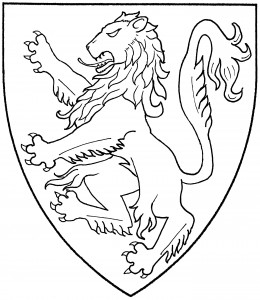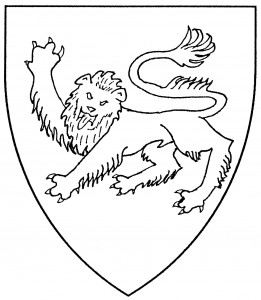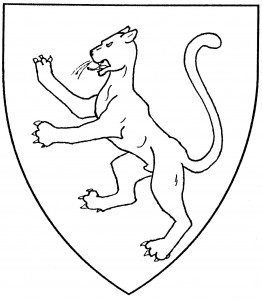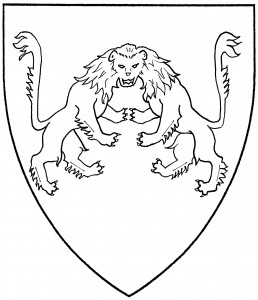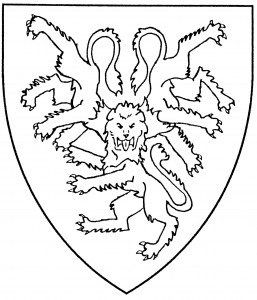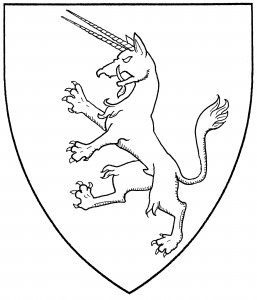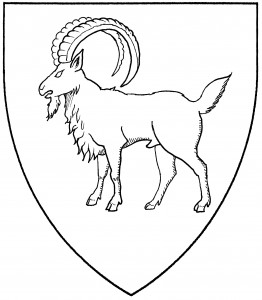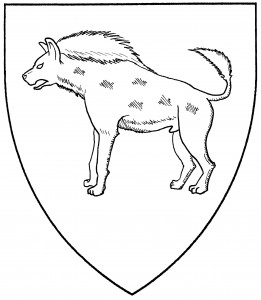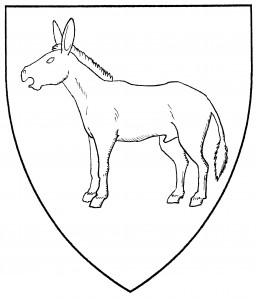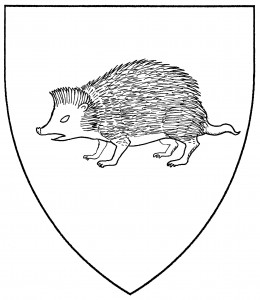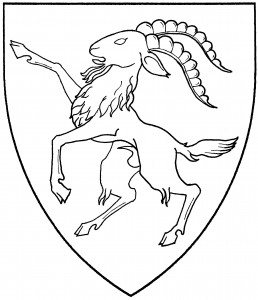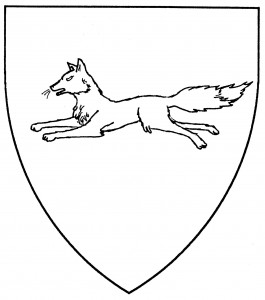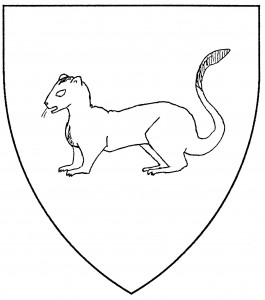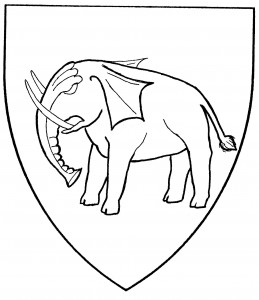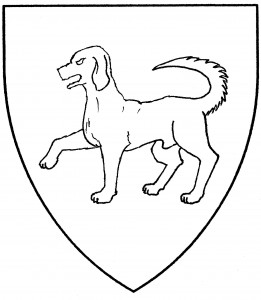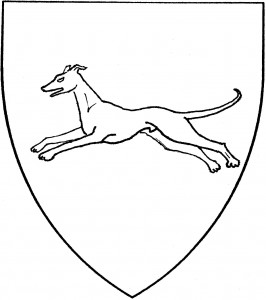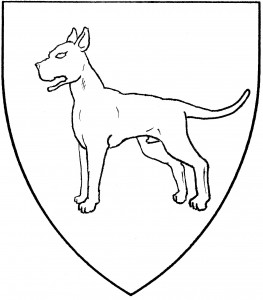The lion is a feline beast whose pride and strength have made it the King of Beasts and the noblest of animals. It is thus a frequent charge in medieval armory, dating from the earliest heraldic records: e.g., the canting arms of the Kingdom of Leon, c.1275 [ANA2 529].
The lion is rampant by default, as in the illustration. When depicted passant guardant, as in the arms of England, medieval heralds often blazoned him a “leopard”. To avoid confusion, Society blazons don’t use the unmodified term “leopard”: instead, the term “natural leopard” denotes the beast found in nature, and lions passant guardant are explicitly blazoned as such.
Period heraldic depictions of the lion were highly stylized, with pinched waist and exaggerated tufts and tail. Society heraldry also includes great cats, related to the lion, which tend to be drawn more naturalistically: the “Bengal tiger”, the “cheetah”, and the “natural leopard”, also called an “African leopard”. These cats differ trivially in outline; only their markings change.
There is also the “ounce”, a generic maneless lion, which is found (so blazoned) as the supporters of the Worshipful Company of Salters, 1591 [Bromley & Child 215]. The Society has also used more modern terms to blazon the ounce, such as “catamount”, “cougar”, “mountain lion”, or “natural panther”. All of these great cats, like the lion, are rampant by Society default.
Lionesses and lion cubs are rarely if ever found. More frequent are the variant forms: the lion “queue-fourchy” or “queue-fourchée”, with a tail split into two tails; the “double-headed lion”; the “lion bicorporate”, with two bodies attached to a single head, as in the arms of John Northampton, Mayor of London in 1381 [Dennys 137]; and the lion “tricorporate”, with three bodies attached to its head [Legh 47]. For related charges, see cat, panther, tyger.
The King of An Tir bears: Checky Or and argent, a lion rampant, tail forked and nowed sable, crowned gules, grasping in dexter forepaw a laurel wreath bendwise vert.
Flóki hvítskeggr Lambason bears: Argent, a lion rampant sable, armed, orbed and langued gules.
Cyrus Aurelius bears: Counter-ermine, three lions Or.
Guillaume de Saint Jacques bears: Sable, a lion sejant ermine.
Arianwen ferch Arthur bears: Quarterly argent and azure, four ounces sejant counterchanged.
Roger Fitzlyon bears: Per pall inverted azure, vert, and sable, a tricorporate lion argent.
